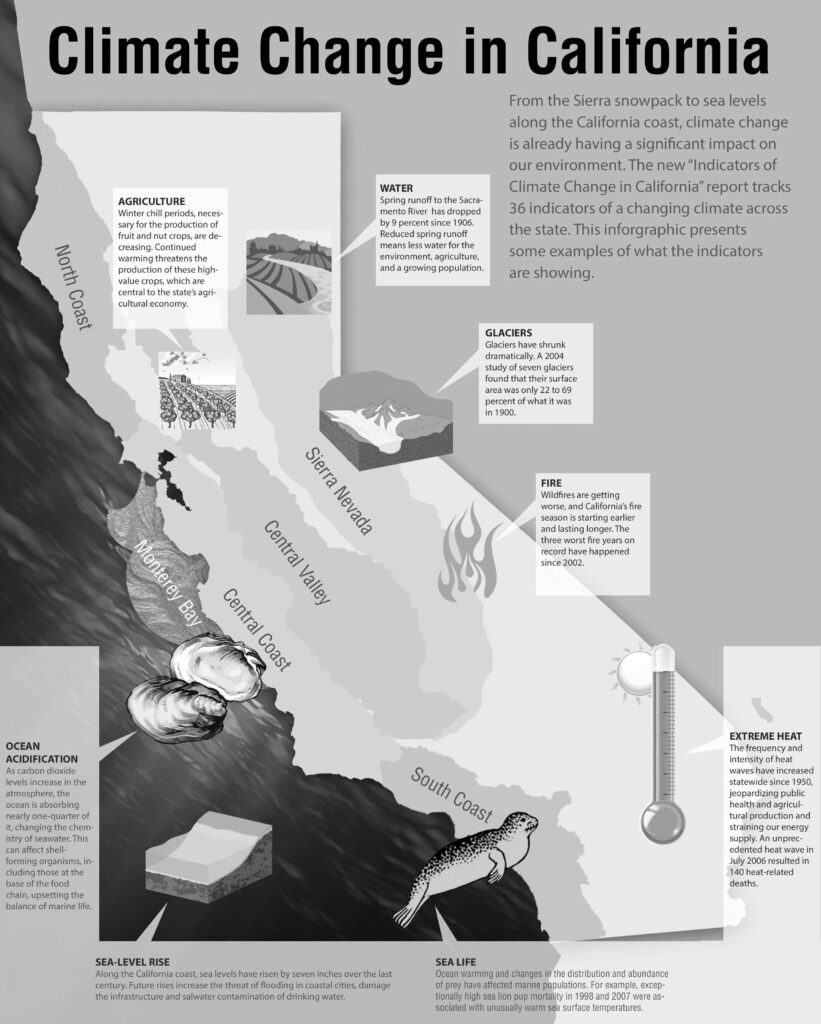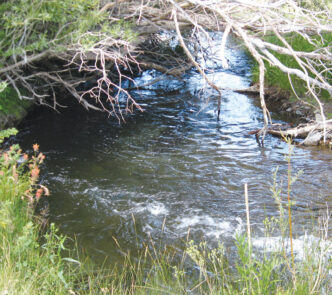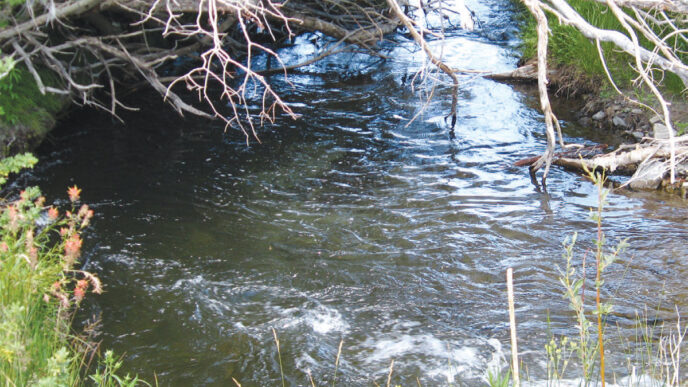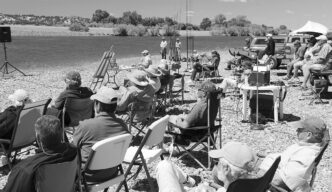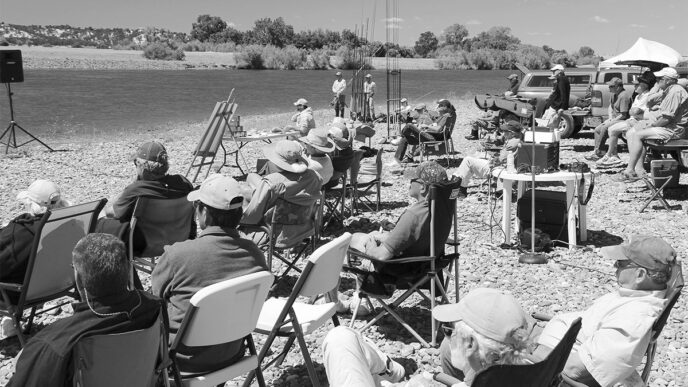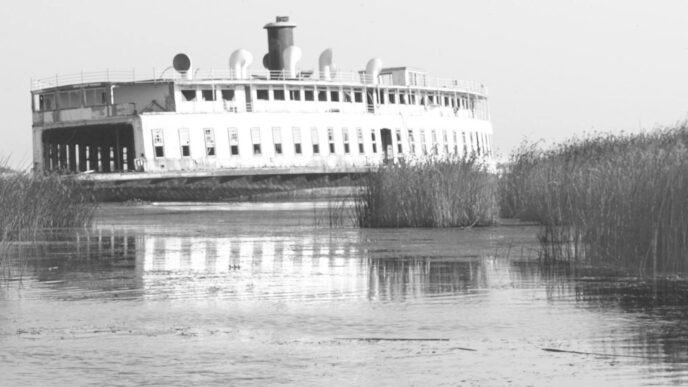Since the last ice age, native trout and salmon have thrived in California’s clear waters. Now, a well-respected fishery biologist estimates that many of our native fish species could be extinct in just 100 years. The cause is climate change. “Predicted climate change effects on freshwater environments in California will dramatically change the fish fauna,” Peter B. Moyle of the University of California, Davis, writes in an article published recently in Plos One, an online scientific journal. “Principally, most native fishes will become more restricted in their distributions and many will ultimately be driven to extinction if present trends continue.” Moyle, the author of Inland Fishes of California, has been documenting changes in the state’s fish population for more than 40 years.
In his article, titled “Climate Change Vulnerability of Native and Alien Freshwater Fishes of California: A Systematic Assessment Approach,” Moyle notes that “most alien [non-native] fishes will suffer much less from climate change but still show some decline, as streams and reservoirs dry up under prolonged drought.”The article is available at http://www.plosone.org (search for “Moyle”). It is based on research that was conducted with U.C.D. postdoctoral students and which Moyle coauthored with Joseph Kiernan, Patrick Crain, and Rebecca Quinones of the university’s Center for Watershed Sciences.
A U.C. Davis press release about the study noted that “the researchers found that, of the 121 native fish species, 80 percent are likely to be driven to extinction or very low numbers as climate change speeds the decline of already depleted populations. In contrast, only 19 percent of the 50 non-native fish species in the state face similar risk of extinction.”
The press release listed the top 20 most threatened fish species in order of vulnerability, which the researchers define as “likelihood of extinction in the next 100 years.” (An “*” means the species has already been listed as threatened or endangered.) These species are:
- Klamath Mountain Province summer steelhead
- McCloud River redband trout
- Unarmored threespine stickleback*
- Shay Creek stickleback
- Delta smelt*
- Long Valley speckled dace
- Central Valley late fall chinook salmon
- Kern River rainbow trout
- Shoshone pupfish
- Razorback pupfish*
- Upper Klamath–Trinity spring chinook salmon
- Southern steelhead*
- Clear Lake hitch
- Owens speckled dace
- Northern California coast summer steelhead
- Amargosa Canyon speckled dace
- Central coast coho salmon*
- Southern Oregon–Northern California coast coho salmon*
- Modoc sucker*
- Pink salmon
“These fish are part of the endemic flora and fauna that makes California such a special place,” Moyle is quoted as saying of the results of the study, which was funded by the California Energy Commission. “As we lose these fishes, we lose their environments and are much poorer for it.”
The study found that the decline in fish species is due to human-caused habitat degradation and climate change. The latter, by warming air temperatures, leads to higher water temperatures. The study, however, also found that native fish species are highly vulnerable for extinction even not accounting for future climate change. Acknowledging that the research is limited because of lack of monitoring data on fish species, Moyle has said that publication of his findings was needed in order to stimulate immediate action. “Unfortunately, change in aquatic ecosystems is happening so rapidly that waiting for high quality information to become available on all species will likely reduce the ability to take action until conservation becomes extremely difficult and expensive,” the study says.
Many scientific studies have projected effects caused by future changes in the climate. The latest, Indicators of Climate Change in California, is a 258-page, $282,000 report by the California Environmental Protection Agency (Cal-EPA) that compiles data and conclusions from existing climate studies and that was produced with the stated goal of prodding government agencies to plan ahead for a hotter future. In an update of a 2009 study, Cal-EPA concludes that scientific studies show the annual average temperature of the state has risen by about 1.5 degrees Fahrenheit since 1895, with the greater warming in parts of the Central Valley and Southern California. (The report is available at
http://oehha.ca.gov/multimedia/epic/2013EnvIndicatorReport.html.)
“Environmental indicators are leaning very dominantly in a single direction that is consistent with the early phases of climate change,” said Dan Cayan, a climate scientist at the Scripps Institute of Oceanography and the U.S. Geological Survey, who contributed to the Cal-EPA study. “It’s not something that’s 100 years away, but it’s already playing out.”
Many indicators of the effects of climate change in the Cal-EPA study are the same as those in Moyle’s research. Most do not bode well for coldwater fish, particularly in the Sierra Nevada. The Cal-EPA report concludes that reductions in snowpack is bringing lower stream flows and changes in the timing of the runoff, which will affect not only fish, but also economysustaining agriculture. “Over the past century, spring runoff to the Sacramento River has decreased by 9 percent,” the summary of the report concludes. “Lower runoff volumes from April to July may indicate: (1) warmer winters, during which precipitation falls as rain instead of snow, and (2) earlier springtime warming. Reduced runoff means less water to meet the state’s domestic, agricultural, hydroelectric power generation, recreation and other needs. Cold water fish habitats, alpine forest growth and wildlife conditions are also impacted.”
In addition to reduced snowpack, particularly in the northern Sierra, the changing climate has caused a loss of California’s glaciers, which have contributed to the critical fish-sustaining runoff in streams during the late summer and during drought or dry periods. Anglers who fish the Sierra are finding it more difficult to see these now dwindling patches of snow and ice — a far cry from when John Muir hiked on them in 1872.
“Glaciers in the Sierra Nevada have decreased in area over the past century,” the report concludes, consistent with a worldwide trend in response to a warming climate. “Beyond their beauty, glaciers provide vital water supplies as they melt in late summer, when mountain streams need the flow,” Tim Palmer writes in his new book California Glaciers, which resulted from his photographing many of California’s remaining glaciers. Palmer has written a number of books about the environment, including works on the “ominous changes” in ecosystems caused by climate changes. “The melting of the glaciers is the most immediately visible. However tragic or trivial one might regard the demise of a single patch of ice, there is no doubt that its melting signifies greater and more threatening changes to come,” he says.
Other indicators of climate change cited in the summary of the state report include “a dramatic decline in the fall-run Chinook salmon abundance in the Central California region since 2004” and higher water temperatures in Sierra lakes as reflected by trends at Lake Tahoe, Lake Almanor and Mono Lake. This is changing the availability of food items consumed by trout living in high-mountain lakes. In addition, the amount of snow-water content — the amount of water stored in the snowpack — has declined in the northern Sierra and increased in the southern Sierra. This affects the amount of fish-sustaining runoff in streams, particularly in the late summer and fall and during drought periods.
Also, the summary notes, thousands of trees have been killed by bark beetles, “and several outbreaks are among the largest and most severe in recorded history. Increasing temperatures, precipitation shifts and extreme weather events appear to be factors driving at least some of the current bark beetle outbreaks.” The loss of trees can result in erosion, which can degrade trout habitat in streams. There also has been an increase in watershed degradation from forest fires. “The data suggest a trend toward increasing acres burned statewide since 2000. The three largest fires years since 1950 have occurred in the past decade (2003, 2007 and 2008), and the annual average since 2000 (598,000 acres) is almost twice that for the 1950–2000 period (264,000 acres).”
Ocean temperatures and sea levels also have increased. “Sea surface temperature at La Jolla has increased over the past century at a rate twice as fast as globally,” the summary of the report notes. “Over the last century, sea levels have risen by an average of 7 inches along the California coast. Levels at the Golden Gate in San Francisco and at La Jolla near San Diego have increased by about 8 and 6 inches respectively.” Future sea-level rises are expected to cause coastal flooding and further degradation of critical spawning areas in the Sacramento-San Joaquin Delta.
Many of California’s conservation groups and public agencies are developing and implementing strategies to deal with the effects of the changing climate. California Trout and Trout Unlimited, the state’s two largest fisheries-conservation groups, have published reports and are working to protect salmonids as streams dwindle in size and flow regimes change.
California’s Department of Fish and Wildlife’s Unity, Integration and Action: DFG’s Vision for Confronting Climate Change in California report in 2011 called for creating a Director’s Climate Change Task Force to encourage partnerships with others to deal with changing climate. It is expected that climate change will be part of the department’s update of its State Wildlife Action Plan in 2015.
